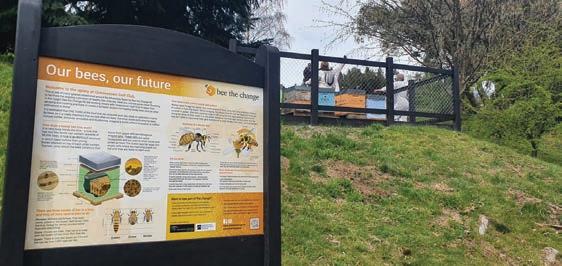
4 minute read
COMMUNITY NOTES
What’s all the buzz about?
by Jessica Allen
Despite an increase in bee disease throughout the country, Queenstown’s honey trade is reporting a bumper year. The industry throughout Aotearoa has seen an increase in American Foulbrood (AFB), a disease that kills honey bee colonies. The bacteria can take many months to kill the bees and in the meantime they may infect other colonies.
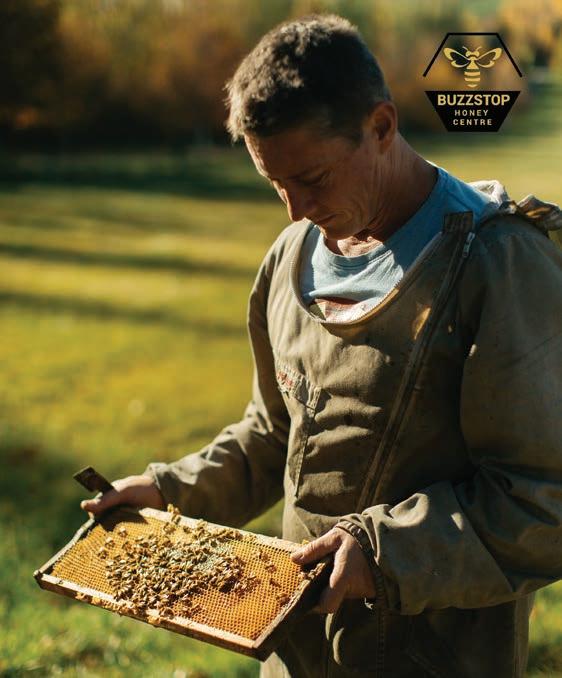
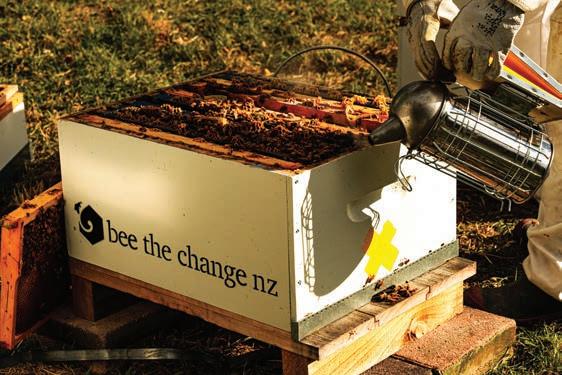
Cases of AFB last year were up 35% on the previous year. While Otago has low numbers, beekeepers have noticed an increase but say it’s easily manageable if people know what to look out for. Nick Cameron is the General Manager of Buzzstop, a bee farm and local producers of honey based in Frankton. He says that one honeycomb could have billions of spores, which makes it difficult to get rid of.
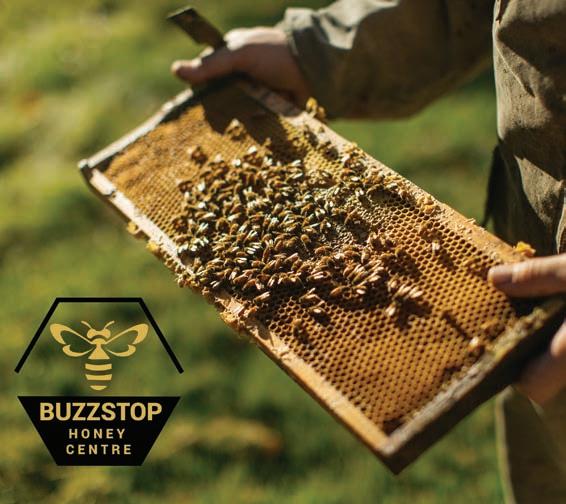
“It’s definitely around the basin and always has been. Part of that’s to do with that there are a huge number of hobbyists who maybe don’t know what to look out for. There are people who start beekeeping with a hiss and a roar and they fall in love with it, but if they just let their hive go – eventually it may develop AFB and die. All the other bees in that vicinity go and rob that hive, drinking the infected honey full of AFB spores and taking it back to their hives, and all of the sudden everyone has AFB in that area,” says Nick. Despite this, it’s been a strong season. Buzzstop processes a lot of honey for beekeepers, as it is one of the only places in the area that offer this service, and Nick says that every beekeeper he’s dealt with has had a great year.
Neal Mcaloon is the founder of Bee the Change, a company that facilitates thriving bee colonies through beehive sponsors. Their hives are all around the district and focus on enabling environmental education and pollination initiatives for local communities. They’ve also reported a good season, although some of the fires in the region, burning flowers off, had an impact. Part of the issue is beekeepers spreading AFB through moving equipment around. Neal believes the region could eradicate it, especially in Queenstown given our location between the lakes and the mountains means that this would be possible. He’s also a lecturer at Otago Polytechnic, and has had 120 students learning the ins and outs of beekeeping over the past three years.
“Otago Polytechnic offer apiculture courses that run throughout a season –you can’t learn to beekeep in an afternoon,“ says Neal. “The majority of the students are hobbyists – it’s really good to see that they’re learning properly and they’re all attending the American Foulbrood course provided. I would suggest that anyone looking to get into beekeeping attend the AFB course –I do think it’s good to get some form of training. It’s good for the community if everybody knows what they’re doing.”
Bridge plans given huge boost
By Paul Taylor
A pedestrian and cycle bridge across a busy section of State Highway 6 in Queenstown is a step closer after winning the backing of Waka Kotahi.
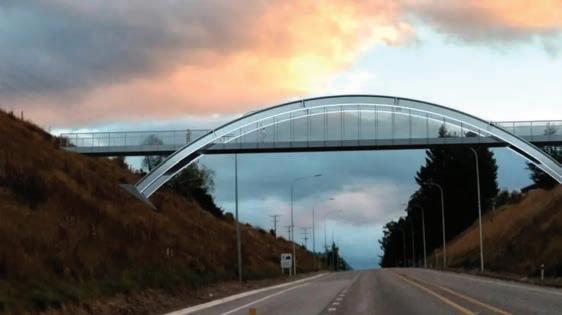
The bridge, originally proposed by Queenstown Trails and lobbied by the Lightfoot Initiative, would connect Quail Rise to Glenda Drive, spanning SH6 on the rise up from Shotover Bridge.
It would be part of the Whakatipu Active Travel Network’s A2 route, providing a more direct and safer route between the Shotover Country and Lake Hayes Estate subdivisions and Frankton.
Waka Kotahi NZ Transport Agency has now committed to funding the bridge, subject to geotechnical investigations.
Geotechnical testing is now being undertaken to test foundation options on site, and if the plan is feasible, design plans and further community and Mana Whenua engagement will follow.
While a bridge was not included in initial plans Waka Kotahi Director of Regional Relationships, James Caygill says a scope change has been approved.
“When we listened to the community about what improvements they wanted to see in this area there was a strong preference for a bridge over the busy road. We took this feedback on board and have approval to investigate a new bridge including funding for design and construction.”
The bridge would effectively mean people can cross the historic Shotover River / Kimiākau bridge and continue on into Frankton without having to go down into the Shotover Delta or tackle the dicey road level crossing in front of Bunnings.
Queenstown Trails CEO Mark Williams says the proposed bridge across State Highway 6 would be a valuable addition to Queenstown’s extensive cycling network.
“We’ve long advocated for a safe way for our community, especially students cycling to school, to cross the busy state highway that intersects our trails. And we’re delighted Waka Kotahi is moving ahead and considering plans to construct what will be an important piece of infrastructure for the area.”
Amanda Robinson, of Queenstown’s Lightfoot Initiative shared his views.
“State Highway 6 sits at the heart of the Active Travel network and the proposed bridge will create the connection we need to keep our community moving safely. This is a great example of what can happen when community organisations work in partnership to advocate for change. I feel confident in saying that the community appreciates Waka Kotahi’s flexibility in finding solutions that will benefit us all.”
Whakatipu Active Travel aims to create an integrated network of trails for walking and cycling that connects to public transport, providing a genuine alternative to getting around by car.
It is designed to connect key destinations such as Arrowtown, Arthur’s Point, Kelvin Heights, Jacks Point, Lake Hayes Estate and Shotover Country, Fernhill, Frankton and Queenstown.

A programme of work to deliver new walking and cycling facilities, as outlined in the completed business case, has been approved by QLDC Council and joint funding for the first package of the new network has been approved by Waka Kotahi NZ Transport Agency.
More detail on all the trails can be found on the QLDC website.










